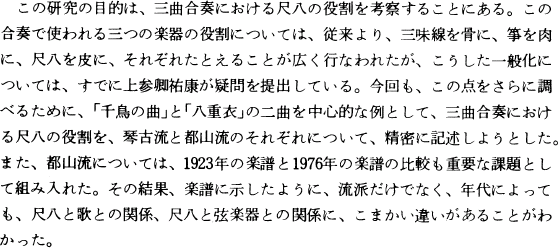No CrossRef data available.
Article contents
A Comparison of Tozanryu and Kinkoryu Shakuhachi Arrangements for Sankyoku Gasso Made from Identical Originals
Published online by Cambridge University Press: 07 March 2019
Extract
The shakuhachi was originally a religious instrument, only allowed to be used by Zen Buddhists of the Fuke sect and forbidden as a chamber music instrument. This situation changed after the downfall of the Shogunate government (1868) when, in 1871, the Fukeshû was suppressed and the shakuhachi achieved the status of a normal secular instrument. Since then a distinction has been made between original compositions (honkyoku) and arrangements (gaikyoku), the latter generally being arrangements of koto or shamisen compositions in the form known as sankyoku gassô for the ensemble of koto, shamisen and shakuhachi.
Abstract

- Type
- Articles
- Information
- Copyright
- Copyright © 1983 by the International Council for Traditional Music
References
A correction has been issued for this article:
Linked content
Please note a has been issued for this article.




